Exfoliation
Even if you are clueless when it comes to skincare you probably know what exfoliation is. You’re most likely even using some sort of exfoliant on your face or body (or both). However, there seems to be quite a lot of questions surrounding exfoliation like ‘how-to exfoliate properly’, ‘how often should I be exfoliating?’ and ‘what’s the best type of exfoliant for my skin?’. These are just some of the questions you can expect to get answers to from this blog post. Let’s get into it!
Skin Exfoliation Explained
Skin exfoliation basically means removing dead skin cells from the surface layers of the skin. Now, our skin actually does this all by itself around every 28 days. However, as we age, this process slows down. This means without our extra help to remove dead skin cells we will essentially have unwanted layers of dead skin cells build on our skin.
There’s more to exfoliation that smoother skin. Obviously exfoliation removes the build-up of dead skin cells on our skin. But, did you know that regular exfoliation can also help to treat Hyperpigmentation (most commonly caused by sun exposure) as well as even out skin tone? Exfoliation will also stimulate blood circulation to increase your natural glow and I am yet to work with a skin that doesn’t love that fresh feeling of exfoliation.
A freshly exfoliated skin will also absorb serums and moisturisers with a lot more ease. This just means all of your other skincare products will be working better if you’re regularly exfoliating.
What if I’m not exfoliating?
Like I said, our skin naturally sheds itself every 28 days or so, but as we age this process does slow down so a little help is only going to benefit your skin. If you are not exfoliating regularly, essentially you will have a build up of dead skin cells on the skin. These dead skin cells can end up blocking the pores and causing blackheads and even lead to blemishes and breakouts. We don’t want that!
Keeping the skin clean plays a very important role in the prevention of blemishes and breakouts. My rule of thumb is double-cleanse twice a day, every day and also exfoliate 1 – 2 weekly depending on your skin type.
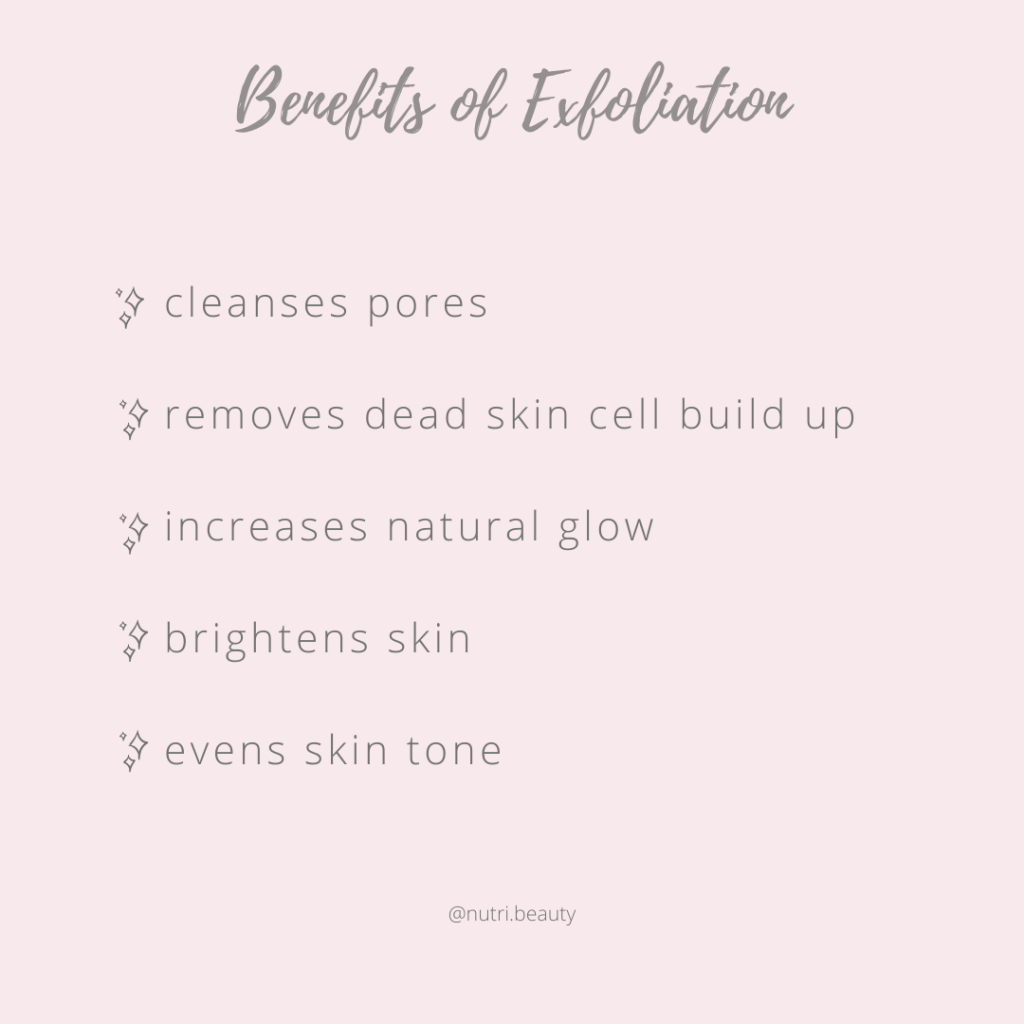
Types of Exfoliation (skincare products)
Physical Exfoliation is the kind where you squeeze a grainy type of cleanser into your hand and then massage it into the skin.
Chemical Exfoliation is when you use an acid or enzyme based product on the skin that is literally designed to eat away the dead skin cells. Both are amazing and have their place. There are a few do’s and don’ts when it comes to selecting the type of exfoliation you want to use.
When I’m in ‘skin-mode’ I actually prefer to use the terms abrasive and non-abrasive but it means the same thing.
Do’s + Don’ts
- Confirm your Skin Type & condition/s before selecting a form of exfoliation. Mature skins that have become finer should opt for chemical exfoliation as it can be a lot gentler on the skin.
- When selecting a Physical Exfoliant, opt for non-plastics. These plastics are known as micro-beads. There are unfortunately a lot of products out there made with micro-beads that really have no benefit to our skin and also are not good at all for the environment. Choose plastic-free and naturally-derived for piece of mind. I’m currently loving the Apricot Facial Masque & Scrub This one is formulated with tiny fragments of Apricot Kernels to exfoliate the skin.
- Be gentle! Let your products do their job. Sometimes we think if we are ‘scrubbing’ harder that the product is going to be more efficient and – NO. This is not the case at all, in fact you can damage the surface layers of the skin and also end up with broken capillaries. Gentle, circular movements to massage the product into the skin – no scrubbing!
- Again confirm your Skin Type to work out how often you should be exfoliating your skin as well.
- Chemical Exfoliation is best for skins suffering from acne/breakouts, particularly products containing AHA’s and/or salisylic acid. Using a chemical exfoliant will also prevent spreading infection across the skin, whilst keeping it clean and free from dead skin cell build up.
- SPF is your skins BFF – especially after exfoliating. Remember to protect those fresh layers of skin.
Exfoliants and Skin Types
It’s not as simple as just grabbing any old exfoliant to use in the shower. You need to take your Skin Type into consideration and if you’re stuck, check out my online Skin Quiz and see what you find out about your skin. For example dry skins are often quite fine in texture and using abrasive products can lead to irritation and even broken capillaries. Where as thicker, oily skins can really benefit from using an abrasive exfoliant, which can help to maintain excess-oil control.
That’s not to say dry skins cannot use an abrasive exfoliant, I myself have a dry skin type and whilst I do love a good AHA Treatment I will also often use an abrasive exfoliant, I am just more mindful when it comes to using it. I’ll add more water and also mostly use the product across my t-zone and not so much on my cheeks. Oily skins with enlarged pores will find by using an abrasive a few times per week will really help to refine pores as well.
Certain skin conditions can also affect what kind of exfoliant you should use. As mentioned above, chemical exfoliation is ideal for a skin suffering from acne. A skin suffering from rosacea may also find a chemical exfoliant more beneficial. Skins suffering from uneven skin tone (hyperpigmentation) may benefit from using an abrasive exfoliant regularly. I know I have had amazing feedback from this DIY Micro-Dermabrasion Kit which is an abrasive form of exfoliant designed to brighten the skin as well.
If in doubt, ask questions when you’re purchasing your next exfoliant.
Body Exfoliation
Don’t tell me you’ve never used a body exfoliant? We all love a good body scrub! The same rules apply for our entire bodies, our skin sheds itself every 28 days (or so). Certain parts of our body become dryer than others. The weather can also affect how dry our skin becomes and we all know when we see those scales on our legs that it’s time for a scrub. Treat yourself to a weekly in-shower scrub or invest in a good body brush which can also help with the appearance of cellulite & boost lymphatic flow.
Guide to Exfoliation
Once you’ve established your skin type and you have worked out whether you want to go down the abrasive or non-abrasive route, you will need to be consistent. Sure, using an abrasive exfoliant in the shower will give you that instant gratification of super soft skin. But, you need to be exfoliating consistently to achieve the best results including evening-out skin tone etc. All products will have different directions for use so just follow the instructions and remember to be consistent.
Save it for later – my little Guide to Exfoliation
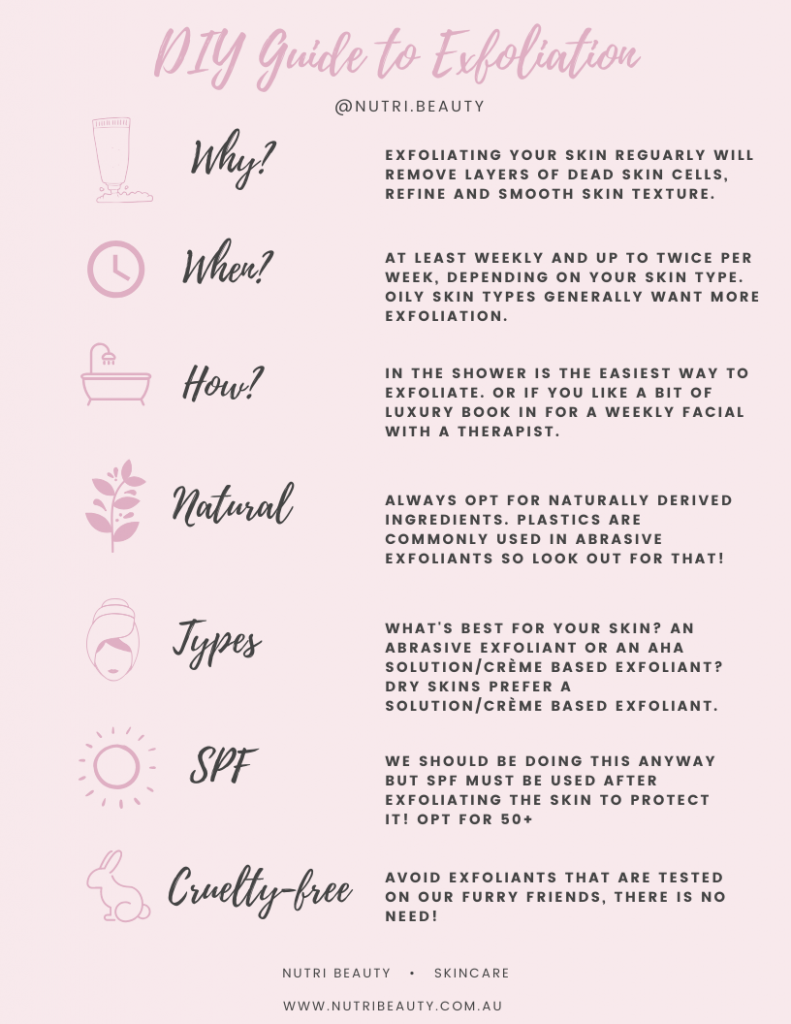
The wrap-up on Skin Exfoliation
Do it.
Consistently.
Establish your skin type and condition/s and then decide on whether abrasive or non-abrasive is for you. Show a little more self-love and exfoliate your face and your body regularly. Remember to save my little Guide to Exfoliation on your phone and you’ll have all the glow-knows at your fingertips.
Introduce your new product/s into your weekly regime and get glowing!
Danielle xx
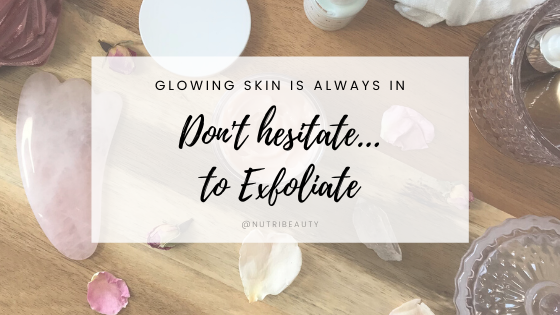
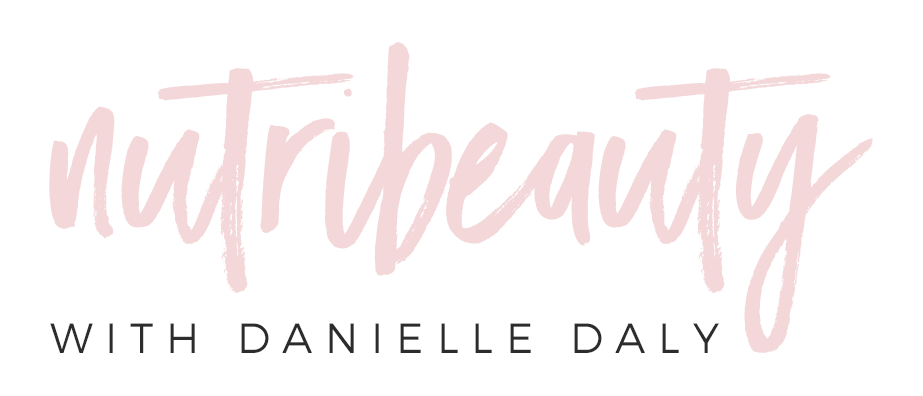
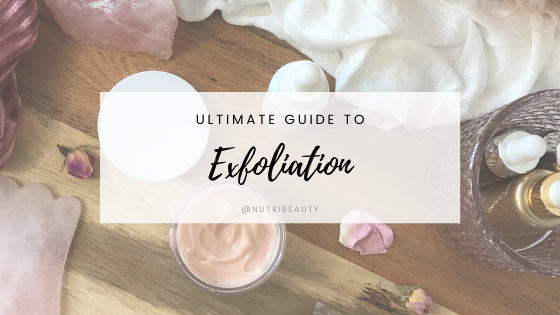
Recent Comments